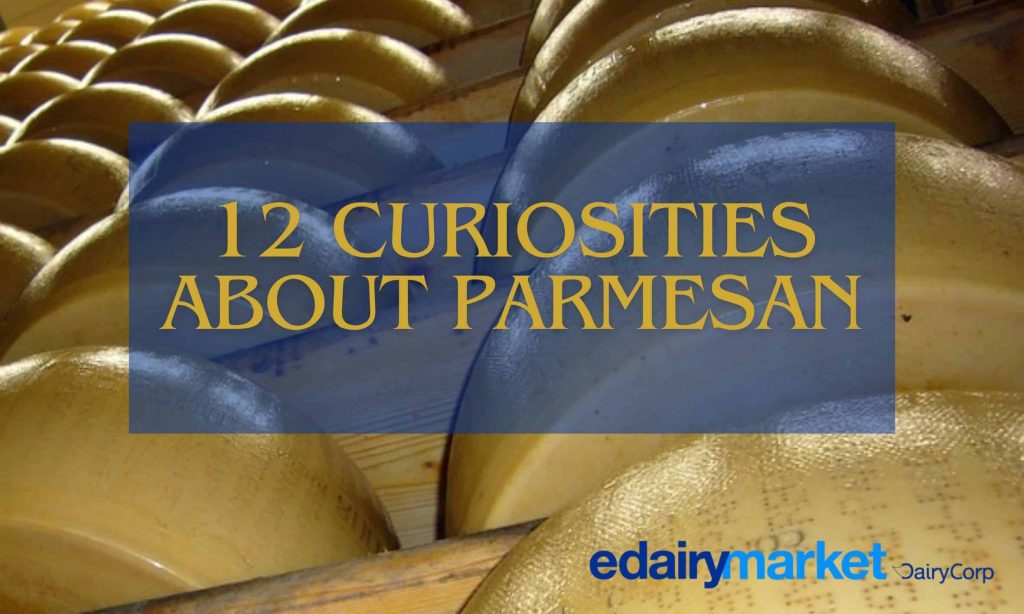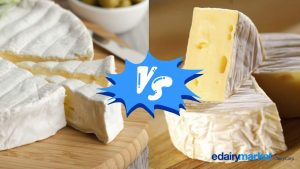
Today eDairy Market tells you about Parmesan or Parmigiano Reggiano (in Italian Parmigiano Reggiano), a famous Italian cheese with a hard, grainy and fatty consistency. Parmesan is used grated or au gratin. Here are 12 curiosities:
1. Origin: Parmesan cheese, also known as Parmigiano-Reggiano, originates from the regions of Parma, Reggio Emilia and other parts of northern Italy. It is considered one of the oldest and most famous cheeses in the world.
2. Traditional production: Parmesan cheese is traditionally made from unpasteurized cow’s milk. The process involves aging the cheese for an extended period, often 24 months or more, which contributes to its rich, nutty flavor.
3. Protected Designation of Origin (PDO): Parmigiano-Reggiano is a PDO product, which means that its production is closely regulated and must meet specific standards and methods in its designated region. This protection guarantees the authenticity and quality of the cheese.
4. Longevity: Parmesan cheese can mature up to 36 months or even longer, giving it a more intense flavor. Some Parmesan wheels are matured for several years, and the older it gets, the more valuable it becomes.
5. Nutritional value: Parmesan cheese is a good source of protein, calcium and several essential vitamins and minerals. It is relatively low in fat compared to many other cheeses, making it a popular choice for those looking to add flavor and nutrition to their dishes.
6. Hard cheese: Parmesan cheese is considered a hard, grainy cheese. It has a crumbly texture, making it perfect for grating or grating over dishes such as pasta, salads and soups.
7. Umami Flavor: Parmesan cheese is known for its umami flavor, which is often described as a savory, rich, almost meaty taste. This is due to the natural aging process and the breakdown of proteins in the cheese.
8. Versatile use: Parmesan cheese is a versatile ingredient and is not limited to Italian dishes. It can be used in a wide variety of dishes, from pasta and risotto to soups, salads and even as a popcorn topping.
9. Waste reduction: The production of Parmesan cheese generates a large amount of whey, a by-product. In some regions, this whey is used to feed pigs, and is said to contribute to the high quality of Italian ham, such as Parma ham.
10. Expensive Perfection: High-quality cured Parmesan cheese can be quite expensive, especially if left to mature for a long time. Some specialty stores offer Parmesan cured for 40, 50 or even 60 months, and it can be very expensive.
11. Artisanal processing: The production of Parmesan cheese involves a lot of manual labor, including cutting the curd, salting by hand and regularly turning the wheels during the ripening process. It is a time-consuming craft.
12. Grana Padano: Grana Padano is a cheese similar to Parmigiano-Reggiano, but comes from different regions of Italy. It shares many characteristics with Parmesan, but some cheese enthusiasts argue about the differences in flavor and production techniques.
Here are just a few interesting facts about Parmesan cheese, a prized ingredient in many dishes around the world. Its rich history, strict production standards and unique flavor make it a staple ingredient in Italian and other cuisines.
✅ At eDairy Market we have all the dairy categories, all the products and all the companies. We represent you.
✅ Power your business through eDairy Market:
- Your microsite with products, brand and domain of your company at a minimum cost.
- You will be able to sell your products and we do not charge you commission per sale.
- Now you can sell your Products, Ingredients and Dairy Machinery in English, Spanish, Portuguese and Mandarin Chinese.
✅ Create your own online store in a super easy way:
























